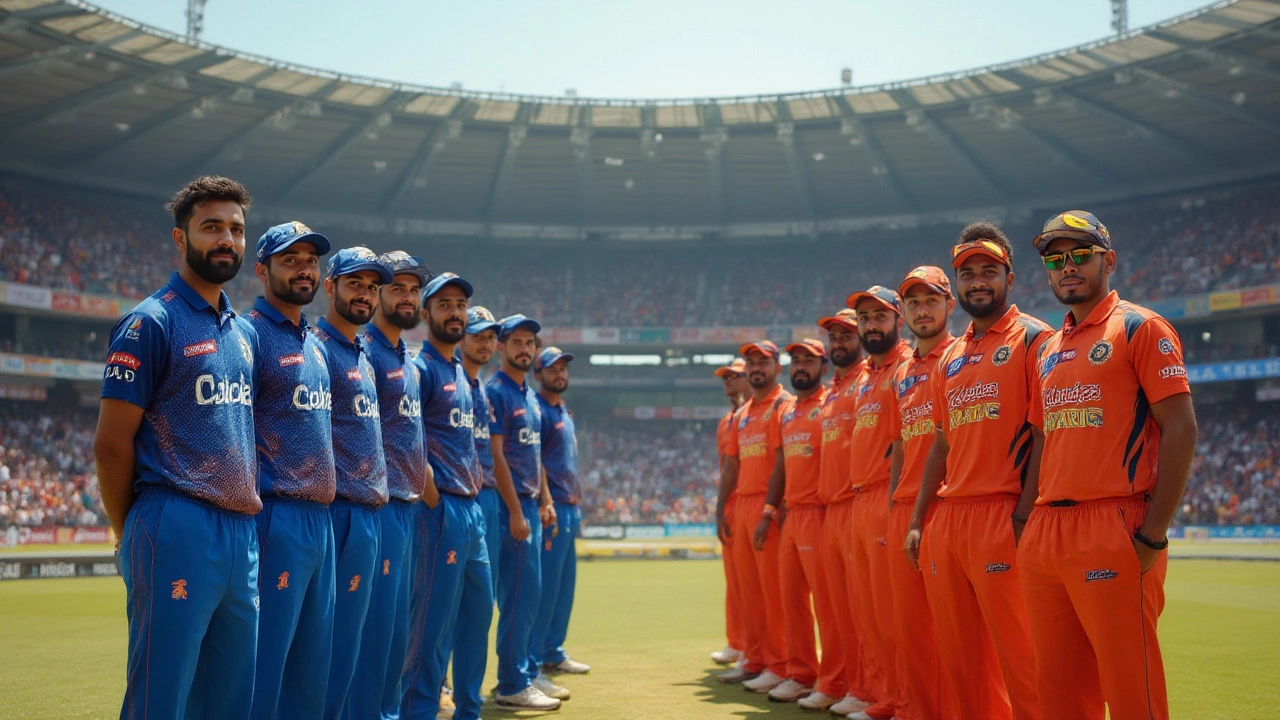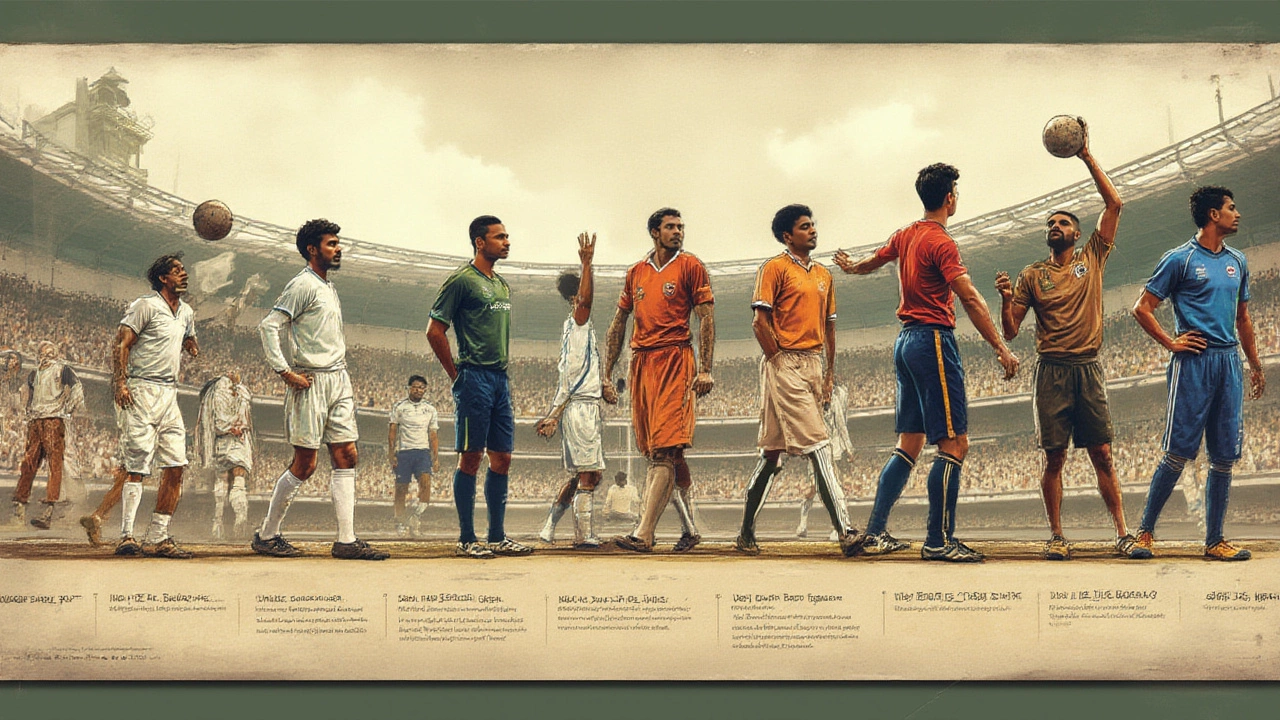What Color Are Away Uniforms? The Untold Truth About Sports Jersey Colors

Ever sat in the stands or on your couch and wondered, “Why are those guys wearing white tonight?” Or maybe you caught your favorite soccer team suiting up in a totally different color on the road, and thought, “Who picked that?” Behind that simple question—”What color are away uniforms?”—is a maze of history, fandom, and even a little bit of math. Let’s unravel this whole jersey-color thing for every major sport, toss in some wild traditions, and break down the real reasons teams don away kits that sometimes look nothing like their home threads. Get ready for a colorful ride.
The Origins and Evolution of Away Uniform Colors
When it all started, teams didn’t exactly obsess about fashion or branding. Back in the late 1800s and early 1900s, uniforms were about practicality, not fan merch. Teams often played in whatever was closest to their colors, but you can imagine what happened next: chaos. Every now and then two teams would step onto a muddy pitch in nearly identical shades, leaving everyone—players, refs, and fans—squinting in confusion. Eventually, someone had the bright idea: "What if one of us wore something a little different on the road?" The very first away uniforms were just slightly off versions of the home kit. In baseball, the tradition settled early: home teams wore white, while visitors threw on grays. For example, the New York Yankees started their classic pinstripes at home long before their road grays became iconic. Why gray? Well, before teams traveled light and did daily laundry, white uniforms would end up looking like mud monsters after road trips. Gray disguised stains, lasted longer, and just made sense for teams spending weeks on grimy rails and dusty ballfields.
Soccer, though, went a different way. The oldest soccer clubs favored unique stripes or blocks of color, but as the game spread, there were too many teams with clashing kits. The solution? An official rule: if the kit colors were too close, the away side swapped to their second strip. Sometimes these were just inverted colors, but clubs started getting creative—think Liverpool’s yellow away kits or Barcelona’s neon oranges. That tradition is so established now that collectors lose their minds when teams drop a wild, limited-edition away set. Meanwhile, in American football, the National Football League set its own look by the 1950s: the home team chose color, so away teams usually went with white to be safe. This flipped in other leagues, but the takeaway is the same—the second uniform exists for clarity. In hockey and basketball, the switch came even later, but now everyone’s got a signature away look—whether it’s classic, wild, or sometimes painfully ugly (hello, 90s teal NBA jerseys).
Technological advances and the rise of big money in sports gave teams more reason to tweak and promote their away gear. Fabric innovations mean colors pop like never before. Social media and TV exposure made teams hungry for ever-flashier designs, because hey, there's nothing like thousands of Instagram posts of your away kit in Milan or Madrid. Still, with all these changes, the root remains: the away uniform is there to make sure no one confuses who’s who, no matter how passionate or rowdy the crowd gets.

Modern Rules for Away Uniform Colors in Major Leagues
So here's the part that actually causes arguments both on the field and among fans: every league has its own set of away uniform rules, and just about every one of them comes with its weird exceptions. In Major League Baseball (MLB), it’s still tradition, not law, for home teams to wear white and away teams to wear gray or another team color. Some teams like the San Francisco Giants have a separate orange alternate for special games, but the league’s main expectation is that colors must clearly contrast to avoid confusion on the field and on TV. The National Football League (NFL) puts the choice in the home team's hands. If the Dallas Cowboys want to wear white at home, their visitors must pick a dark color, even if it’s the greenest green you’ve ever seen. The NBA was stuck on home-whites and away-colors until 2017, then opened the doors to just about anything, as long as both sides are clearly distinct—you've probably noticed wild color showdowns on national games. Meanwhile, the NHL has home teams in dark colors and road teams in white, thanks to a 2003 rule change. Of course, there’s always that “Heritage Night” or throwback game that throws everything out the window.
Here's a quick breakdown of the current standard across sports:
| Sport | Home Uniform Color | Away Uniform Color | Exceptions |
|---|---|---|---|
| MLB | White | Gray or team color | Special/alternate jerseys |
| NFL | Any (usually color) | Opposite of home | Thanksgiving, Color Rush |
| NBA | Any | Contrasting color | City, Statement, Earned editions |
| NHL | Dark | White | Heritage/classic nights |
| Soccer (Europe) | Club color | Any, but must contrast home team | Third kits, Champions League |
Things can still get complicated fast. Think of soccer’s “third kits”—basically insurance in case both home and away clash, or if UEFA/CONCACAF regulations demand even more contrast. That’s how you get Real Madrid in highlighter green or Arsenal in black. The NBA’s "City Edition" releases mean a team might have four or five jerseys in a single season. And pay attention during rivalry games or special anniversaries—those commemorative or “throwback” uniforms can break the usual rules entirely.
Some folks think these constant changes are all about sales—and yeah, they’re not wrong. Teams absolutely make extra money selling special edition away jerseys. But remember the original purpose: clear distinction. The fashion statements and cash grabs are just bonuses. So if you’re confused about why a team’s away outfit keeps morphing, just know there’s probably a league official (and a marketing exec) who approved the swap.
The Stories Behind Away Jerseys: Iconic Colors, Fan Lore, and Style Tips
Let’s geek out on the most famous and bizarre away uniforms across eras—and talk a little about how to actually wear one. Some colors stick. Arsenal’s yellow away kit is such a legend that fans begged for its return. Inter Milan’s black-and-blue stripes (home) and white with blue-and-black accents (away) are immediately recognizable in UEFA play. The LA Lakers hit purple on the road by pure tradition, while their white and gold get the home court. The Dallas Cowboys? Actually wear white at home so much that *blue* is their away color—and it’s considered “bad luck” by die-hard fans, because of a string of Super Bowl losses in the navy blue kit.
Some away jerseys are infamous for their boldness or sheer weirdness. Think: Nigeria’s 2018 soccer “Naija” kit, which broke online records for sales thanks to its green zigzags. Or the Miami Heat’s neon “Vice” NBA alternate—meant for away games, but so popular they wore it at home too. Fans go wild for these limited runs because they’re a mix of nostalgia, hype, and pure collectability. If you want to spot a diehard fan, look for those wearing a throwback away jersey from a championship year. Those turn heads at sports bars and tailgates, and spark a lot of “Where’d you get that?” envy.
Now for a hot tip: if you’re thinking about wearing an away jersey, go bold! These tops almost always bring more attitude than the home whites. Pair a dark away football jersey with jeans, sneakers, and a touch of attitude, and you’re good for game day or just lounging at home. Just double-check your colors: rocking your rival’s away kit in their home pub might make for an awkward night. Collectors, keep those limited editions clean—resale values for rare away kits can surprise you. The 1994 Manchester United blue away kit, for example, sells for hundreds now, all because of that one game against Barcelona. Want to start a conversation with another fan? Ask them their favorite away kit. Every team, from Liverpool to the LA Clippers, has stories tied to their boldest, brightest road uniforms. The next time a game flips to a commercial or the crowd erupts after a huge touchdown, check out the colors. They’re not just fabric—they’re history, bad luck, genius branding, and a little bit of chaos all rolled up and ready to be worn, wherever the team has to play next.
And if you ever get lost in a sea of colors at a stadium (or just trying to pick your next jersey online), remember the rule that will save you every single time: away uniforms exist for one simple reason—so no one, not fans, not players, not even the referee, ever wonders who’s who.
- Jul, 3 2025
- Violet Greenfield
- 0
- Permalink
Written by Violet Greenfield
View all posts by: Violet Greenfield